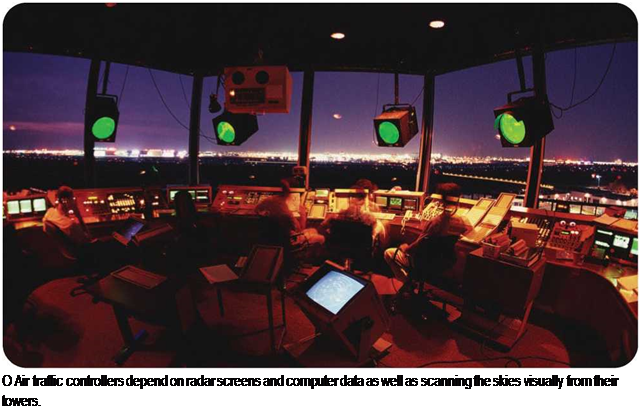Keeping Track
Airport controllers work from a control tower, a tall building with a good view of the runways. They use their eyes, as well as radar, to scan airspace. Incoming airplanes waiting to
О In the United States, military airplanes are controlled by military air traffic centers based on land and on ships at sea. These U. S. Navy controllers are monitoring incoming aircraft aboard the aircraft carrier USS Abraham Lincoln.
 |
land circle in a vertical “holding stack” above the airfield. When a controller directs the lowest plane in the stack to start its landing approach, the next plane descends to take its place.
Once an airplane has touched down, the controller directs it to an exit taxiway, clearing the runway for the next landing. At large, busy airports, for extra safety, radar also tracks planes on the ground. With an increasing number of flights every year-and tightened security checks at airports-air traffic controllers have a heavy workload. Delays at airports may happen when there are simply too many aircraft for the controllers to handle smoothly.
Modern navigational aids have increased air safety. The first navigational aids for pilots were illuminated beacons on the ground. Next came radio
stations transmitting signals, which a pilot could use to fix a course. Modern airplanes have onboard radar and inertial guidance navigation systems, with computers that can fly the plane and plot a course automatically, using data from the satellites of the Global Positioning System (GPS) and other navigation systems. Most modern airliners can, if necessary, land automatically without any help from the pilot.
SEE ALSO:
• Airport • Altitude • Communication
• Navigation • Pilot • Radar
_____________________________________________ )










